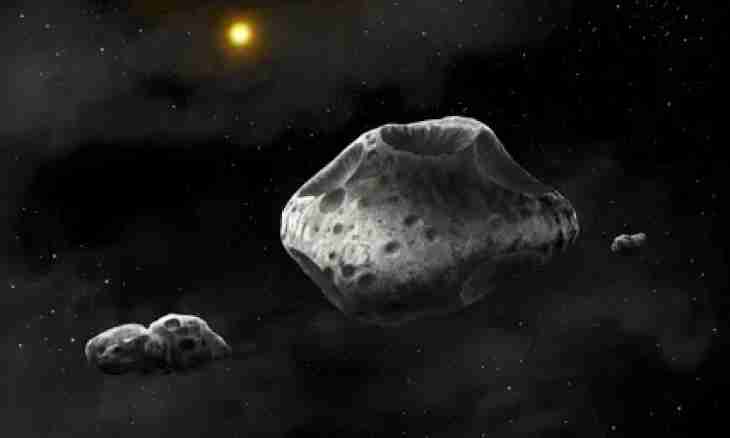Vesta among celestial bodies of the main asteroid belt of the Solar system wins first place on the weight and the second in dimensions. Only the Pallada is ahead of her in this parameter. Vesta has many riddles most of which part is not solved by scientists yet.
It is a little history
Opened for Vest in far 1807. It was made by the German astronomer Heinrich Olbers. Subsequently his colleague and the fellow countryman Karl Gauss suggested to call the found asteroid by the name of the ancient Roman goddess of a home Vesta.
Vesta's features
Diameter of this asteroid is about 500 km. Scientists came to a conclusion that it was born at the same time with the Solar system, that is it is an age-mate of Earth. However its surface looks so as if it was formed only yesterday.
Vesta is not influenced by space aeration. Astrophysicists consider that, perhaps, this asteroid has magnetic field which reflects parts of solar wind and cosmic dust. For this reason its surface also looks forever young.
Generally, Vesta has enough secrets. Not for nothing she attracted huge scientific interest. NASA even sent to its orbit the special device in hope that it will be able to slightly open the mysteries of this space body. And it could make it.
Geological maps of an asteroid of Vest
The group of scientists managed to create the whole series of geological maps of Vesta. Pictures of the spacecraft of NASA of Dawn Mission helped with mapping. It researched an asteroid from June, 2011 to September, 2012.
Vesta's cards have quite high resolution, on them features of a surface of a celestial body in the smallest details are clearly visible. They were published in special issue of the Icarus magazine, in addition to them there are 11 scientific works.
Mapping of an asteroid went within 2.5 years. On the basis of the received cards the scientists managed to make out better a celestial body and to confirm a hypothesis of Vesta's formation. Several large asteroids really took part in this process at once. As a result of collisions with them "earned" several large craters from different stages of the history of Vest.
After the research of an orbit of Vesta the Dawn spacecraft went to Ceres. First "guest" of this dwarf planet he will become only in 2015. Ceres as well as Vesta, is a large object of the main belt of asteroids. Their collision, according to astronomers, is possible with the probability of 0.2% on one billion years. If it happens, Earth is waited by chaos.

